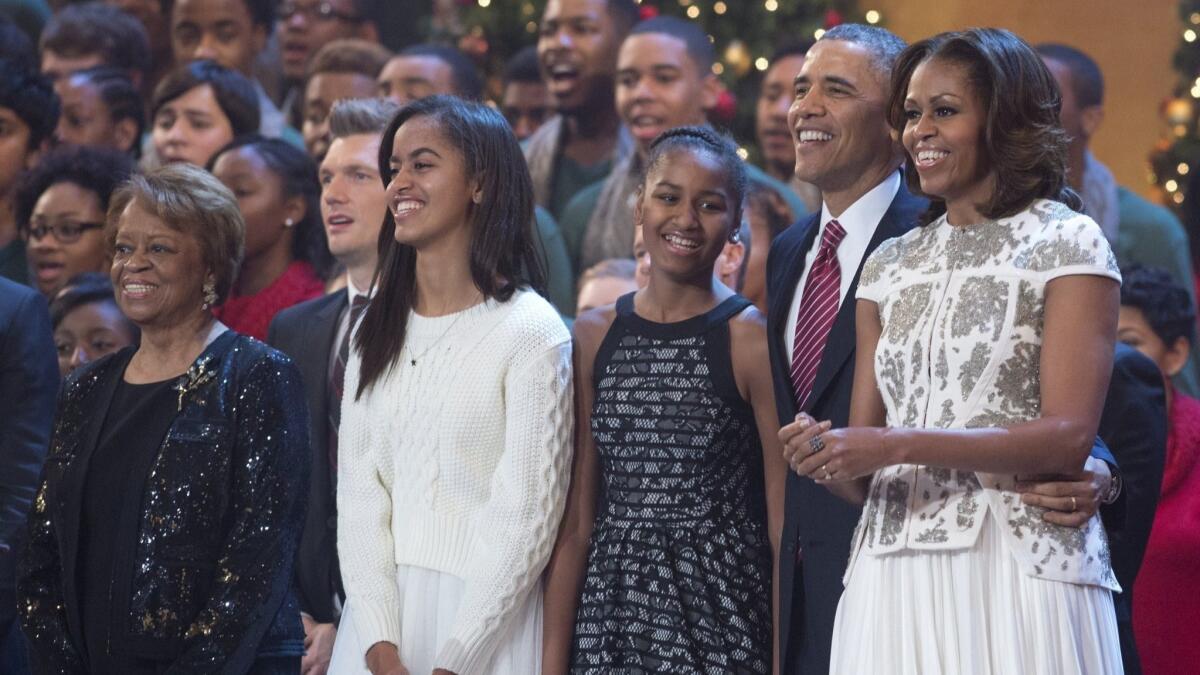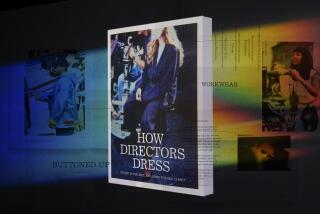Op-Ed: Black people are better dressers than white folks. There’s a reason

- Share via
Black people are better dressers than white folks. At least, that’s what my Grandma Ada always taught me.
As a colored girl growing up in the early ’60s in Virginia , I loved eavesdropping on Grandma’s conversations as she connected the dots of life. Her outrageous proclamations made huge impressions on my young mind, and some of them have taken me years to untangle.
Like this one: “White people just don’t like wearing socks or drawers. I tell you, it’s the truth.”
I remember, as a girl of 10 or so, moving in closer to hear more and watch Grandma Ada shaking her head in exasperation as she ironed the weekly laundry, which had been dropped off earlier that day by one of the affluent white families for whom she worked as a maid. Grandma cleaned the the family’s house during the week, and she often did ironing for them on the weekends. As she steamed and sprayed starch, she always had an attentive audience in my Aunt Helen, her little sister sidekick, who nodded and hung on every word.
My grandmother knew that on most days I would have to look better, be better and act better than white folks just to get a foot in the door.
Grandma was on a roll. She had always been obsessive about clean underwear, warning us that you never know when you might end up in the emergency room. And no one would want to save the life of someone with funky drawers. That’s why she found the white family and their apparently missing underwear so shocking.
“I’ve always had my suspicions, but the last time I was there cleaning, I counted. Five pairs of underwear for her, six for him and five pairs of socks. Nothing had been moved. I had washed and pressed everything the week before and it was just the way I had left it. They hadn’t touched nothing. I’ve seen him walk out the house in the dead of winter with no socks on, but now I’m thinking they must both go around without underwear too.”
Both Grandma Ada and Aunt Helen burst out laughing while Grandma continued to attack a white shirt with a can of spray starch.
“You know what I’m going to do with that pile of clothes she brought me today as hand-me-downs?” Grandma pointed to several bags of clothes by the front door. “I’m going to take them right down to the Goodwill. There’s no way I’m going to let anybody I know wear something that’s been worn by folks who don’t wear drawers. You know both of them are as nice as they can be. Bless their heart, but they dress the way they decorate their house — full of junk — lots of little knickknacks just gathering dust making more work for me.”
Then came her main point: “Have you noticed,” Grandma Ada asked, “that very few white people know how to dress? This woman, couldn’t put a decent outfit together if her life depended on it. You can’t buy style, no matter how much money you got.”
Aunt Helen nodded in eager agreement.
That’s how stereotypes begin. We hear biased things as children, and we start evaluating the world through the lens of those biases.
I never found much evidence to confirm my grandmother’s theory that white people don’t wear socks and underwear, but I found plenty to support her broader stereotypes about white folks and dressing.
Grandma Ada’s high dress-code standards were passed down to her daughter, my mother.
While money was tight, my four sisters and I, along with my brother, were always impeccably dressed; hair braided, tight and neat; ashy knees and elbows rubbed shiny with gobs of Vaseline.
During the summer, every day in late afternoon, we were called in for our daily ritual of taking our baths, getting our hair combed, and changing in to what was referred to as our “clean clothes” ensembles, which often included bright sundresses or matching shorts and tops made by Grandma Ada, who was a gifted seamstress. Once cleaned up, we were forbidden to have any contact with sweat or dirt.
Looking back, I can see that my grandmother and mother were overcompensating for the dirty stench of Jim Crow. Although racism prevented my mother from voting, or us attending our neighborhood school, she could damn well make sure that her six kids looked like they belonged in the world, despite its repeated attempts to reject them. She scrubbed us, dressed us up, greased us down, braided our hair, pushed up our chins and sent us out knowing that we would be judged more by how we looked than who we were.
As I got older, the stakes got higher. After my freshman year at Northwestern, I returned home for Christmas break with a new black power/hippie look — large Afro, worn jeans and an oversized military jacket.
My mother and siblings laughed and rolled their eyes. My grandmother, after stuffing me with her homemade pound cake and ice cream, sat me down for a talk.
“You know you can’t go around looking trifling, acting like you are a white hippie or something. Rules are different for us. Hope you got some clean drawers on under those wrinkled jeans. Ironing board set up downstairs if you want to use it.”
So, I got the message early and often. Appearances mattered, and would always matter, more for us in the black community. It was, and still is, a convoluted message rooted in a sense of pride, self-preservation and the human desire to control what little you can in a world where you can be dehumanized and rendered invisible on a daily basis.
Enter the Fray: First takes on the news of the minute »
In her own way, my grandmother was preparing me for a world of inequities and racism. As a black person, she knew that on most days I would have to look better, be better and act better than white folks just to get a foot in the door. I’ve seen this narrative played out time and time again for me and others in my life.
My husband, a Stanford-trained physician, experienced this early in his career when, as a young intern, he was frequently mistaken for a food service attendant or orderly, even when wearing a white coat and an M.D. badge. In the eyes of many, he didn’t look like a physician so he had to dress the part.
The side effects of racism have a long reach. Now, 40 years later, I watch him every morning, still dressing meticulously with his matching coat and tie, crisp starch shirt, shined shoes, and, of course, always, clean underwear. He looks good. And, he dresses better than most of his white colleagues because he has to.
We all do.
Judy Belk frequently writes about family, race and community. She also is president/CEO of the California Wellness Foundation.
More to Read
A cure for the common opinion
Get thought-provoking perspectives with our weekly newsletter.
You may occasionally receive promotional content from the Los Angeles Times.









